Potrebujeme váš súhlas na využitie jednotlivých dát, aby sa vám okrem iného mohli ukazovať informácie týkajúce sa vašich záujmov. Súhlas udelíte kliknutím na tlačidlo „OK“.
ASTM E1995-12
Standard Test Method for Measurement of Smoke Obscuration Using a Conical Radiant Source in a Single Closed Chamber, With the Test Specimen Oriented Horizontally
Automaticky preložený názov:
Štandardná skúšobná metóda pre meranie zaclonením dymom používať kónickú zdroja sálavého v jedinom uzavretom senátu s tým, že skúšobnej vzorky vodorovne
NORMA vydaná dňa 1.7.2012
Informácie o norme:
Označenie normy: ASTM E1995-12
Poznámka: NEPLATNÁ
Dátum vydania normy: 1.7.2012
Kód tovaru: NS-43870
Počet strán: 24
Približná hmotnosť: 72 g (0.16 libier)
Krajina: Americká technická norma
Kategória: Technické normy ASTM
Kategórie - podobné normy:
Anotácia textu normy ASTM E1995-12 :
Keywords:
cone heater, fire, fire-test-response characteristic, optical density, smoke, smoke obscuration, ICS Number Code 13.220.40 (Ignitability and burning behaviour of materials and products)
Doplňujúce informácie
| Significance and Use | ||||||||||||||||||||||||||
|
This test method provides a means for determining the specific optical density of the smoke generated by specimens of materials, products, or assemblies under the specified exposure conditions. Values determined by this test are specific to the specimen in the form and thickness tested and are not inherent fundamental properties of the material, product, or assembly tested. This test method uses a photometric scale to measure smoke obscuration, which is similar to the optical density scale for human vision. The test method does not measure physiological aspects associated with vision. At the present time no basis exists for predicting the smoke obscuration to be generated by the specimens upon exposure to heat or flame under any fire conditions other than those specified. Moreover, as with many smoke obscuration test methods, the correlation with measurements by other test methods has not been established. The current smoke density chamber test, Test Method E662, is used by specifiers of floor coverings and in the rail transportation industries. The measurement of smoke obscuration is important to the researcher and the product development scientist. This test method, which incorporates improvements over Test Method E662, also will increase the usefulness of smoke obscuration measurements to the specifier and to product manufacturers. The following are improvements offered by this test method over Test Method E662: the horizontal specimen orientation solves the problem of melting and flaming drips from vertically oriented specimens; the conical heat source provides a more uniform heat input; the heat input can be varied over a range of up to 50 kW/m2, rather than having a fixed value of 25 kW/m2; and, the (optional) load cell permits calculations to be made of mass optical density, which associates the smoke obscuration fire-test-response characteristic measured with the mass loss. Limitations : The following behavior during a test renders that test invalid: a specimen being displaced from the zone of controlled irradiance so as to touch the pilot burner or the pilot flame; extinction of the pilot flame (even for a short period of time) in the flaming mode; molten material overflowing the specimen holder; or, self-ignition in the nonflaming mode. As is usual in small-scale test methods, results obtained from this test method have proven to be affected by variations in specimen geometry, surface orientation, thickness (either overall or individual layer), mass, and composition. The results of the test apply only to the thickness of the specimen as tested. No simple mathematical formula exists to calculate the specific optical density of a specimen at a specimen thickness different from the thickness at which it was tested. The literature contains some information on a relationship between optical density and specimen thickness [1]. Results obtained from this test method are affected by variations in the position of the specimen and radiometer relative to the radiant heat source, since the relative positioning affects the radiant heat flux (see also Appendix X2). The test results have proven sensitive to excessive accumulations of residue in the chamber, which serve as additional insulators, tending to reduce normally expected condensation of the aerosol, thereby raising the measured specific optical density (see 5.5.8.3 and 11.1.2). The measurements obtained have also proven sensitive to differences in conditioning (see Section 10). Many materials, products, or assemblies, such as some carpeting, wood, plastics, or textiles, require long periods to attain equilibrium (constant weight) even in a forced-draft conditioning chamber. This sensitivity reflects the inherent natural variability of the sample and is not specific to the test method. In this procedure, the specimens are subjected to one or more specific sets of laboratory test conditions. If different test conditions are substituted or the end-use conditions are changed, it is not necessarily possible by or from this test method to predict changes in the fire-test-response characteristics measured; therefore, the results are valid only for the fire test exposure conditions described in this procedure. This test method solves some limitations associated with other closed chamber test methods, such as Test Method E662[2-5] (see 5.4.1). The test method retains some limitations related to closed chamber tests, as detailed in 5.5.8.1-5.5.8.5. Information relating the specific optical density obtained by this test method to the mass lost by the specimen during the test is possible only by using the (optional) load cell, to determine the mass optical density (see Annex A1). All specimens consume oxygen when combusted. The smoke generation of some specimens (especially those undergoing rapid combustion and those which are heavy and multilayered) is influenced by the oxygen concentration in the chamber. Thus, if the atmosphere inside the chamber becomes oxygen-deficient before the end of the experiment, combustion may ceases for some specimens; therefore, it is possible that those layers furthest away from the radiant source will not undergo combustion. The presence of walls causes losses through deposition of combustion particulates. Soot and other solid or liquid combustion products settle on the optical surfaces during a test, resulting in potentially higher smoke density measurements than those due to the smoke in suspension. This test method does not carry out dynamic measurements as smoke simply continues filling a closed chamber; therefore, the smoke obscuration values obtained do not represent conditions of open fires. |
||||||||||||||||||||||||||
| 1. Scope | ||||||||||||||||||||||||||
|
1.1 This is a fire-test-response standard. 1.2 This test method provides a means of measuring smoke obscuration resulting from subjecting essentially flat materials, products, or assemblies (including surface finishes), not exceeding 25 mm [1 in.] in thickness, in a horizontal orientation, exposed to specified levels of thermal irradiance, from a conical heater, in the presence of a pilot flame, in a single closed chamber. Optional testing modes exclude the pilot flame. 1.3 The principal fire-test-response characteristic obtained from this test method is the specific optical density of smoke from the specimens tested, which is obtained as a function of time, for a period of 10 min. 1.4 An optional fire-test-response characteristic measurable with this test method is the mass optical density (see Annex A1), which is the specific optical density of smoke divided by the mass lost by the specimens during the test. 1.5 The fire-test-response characteristics obtained from this test are specific to the specimen tested, in the form and thickness tested, and are not an inherent property of the material, product, or assembly. 1.6 This test method does not provide information on the fire performance of the test specimens under fire conditions other than those conditions specified in this test method. For limitations of this test method, see 5.5. 1.7 Use the SI system of units in referee decisions; see . The inch-pound units given in brackets are for information only. 1.8 This test method is used to measure and describe the response of materials, products, or assemblies to heat and flame under controlled conditions, but does not by itself incorporate all factors required for fire hazard or fire risk assessment of the materials, products, or assemblies under actual fire conditions. 1.9 Fire testing of products and materials is inherently hazardous, and adequate safeguards for personnel and property shall be employed in conducting these tests. This test method may involve hazardous materials, operations, and equipment. See also 6.2.1.2, Section 7, and 11.7.2. 1.10 This standard does not purport to address all of the safety concerns, if any, associated with its use. It is the responsibility of the user of this standard to establish appropriate safety and health practices and determine the applicability of regulatory limitations prior to use. |
||||||||||||||||||||||||||
| 2. Referenced Documents | ||||||||||||||||||||||||||
|
Podobné normy:
Historická
1.2.2014
Historická
1.2.2012
Historická
1.7.2012
Historická
1.4.2013
Historická
1.2.2013
Historická
1.1.2010
Odporúčame:
Aktualizácia technických noriem
Chcete mať istotu, že používate len platné technické normy?
Ponúkame Vám riešenie, ktoré Vám zaistí mesačný prehľad o aktuálnosti noriem, ktoré používate.
Chcete vedieť viac informácií ? Pozrite sa na túto stránku.



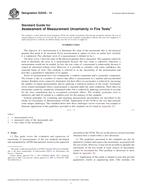 ASTM E2536-14
ASTM E2536-14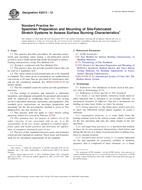 ASTM E2573-12
ASTM E2573-12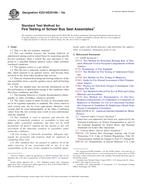 ASTM E2574/E2574M-12..
ASTM E2574/E2574M-12..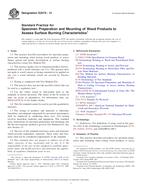 ASTM E2579-13
ASTM E2579-13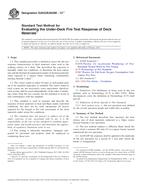 ASTM E2632/E2632M-13..
ASTM E2632/E2632M-13..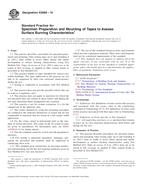 ASTM E2688-10
ASTM E2688-10
 Cookies
Cookies
